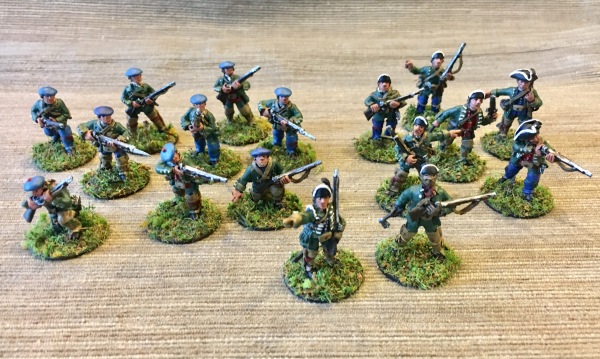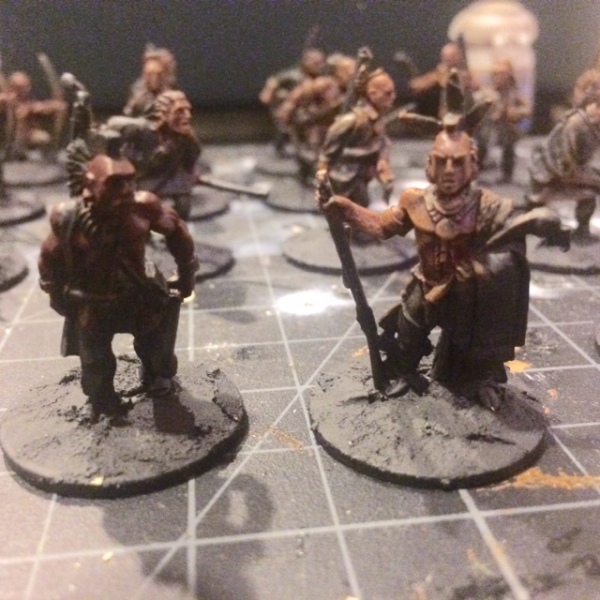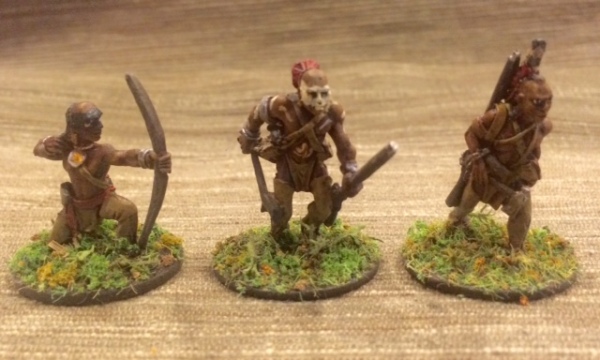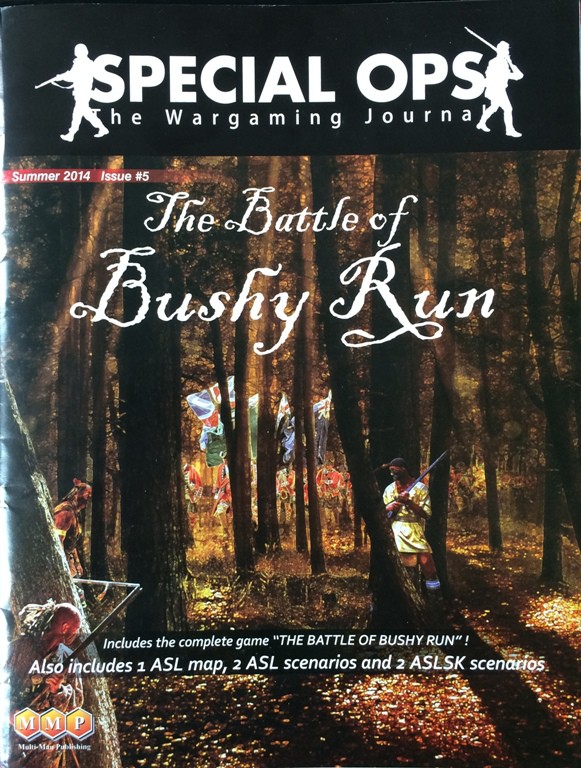
























The French and Indian War (1754-1763) called for new tactics for old, professional armies steeped in traditional European warfare. With hostilities among French, French-allied Indians and Canadians, British and colonists of all stripes erupting over territorial disputes on the frontier of North America, locally-mustered soldiers were of paramount importance to all sides.
Robert Rogers, born in Massachusetts of Irish immigrants in 1731, was key in raising forces in New Hampshire for the British in the mid 1750s on the eve of the conflict. With animosity toward Indians in the region, his recruits formed what came to be known as Rogers’ Rangers. Operating out of Northeastern and Central New York, the company of some 600 men who formed Rogers’ Rangers participated in some of the key actions of the war including the Battles on Snowshoes and the Battle of Carillon, both in 1758.

Aside from his leadership during the FIW, he also contributed significantly with his “Rules of Ranging.” Written in 1757, the 28 rules provide an outline for the discipline and tactics which defined Rogers’ own brand of guerilla-style wilderness war. So visionary in their combination of Native American style warfare with some European principles for the rules of war, some version of these have been used by US Army Rangers to this day.
Following the end of the FIW, Rogers continued to work with the British military during Pontiac’s Rebellion that swept through the Great Lakes in 1763-1766 and finally during the American War of Independence in the 1770s and 1780s. Despite having devoted his entire adult life to warring on behalf of the British in North America, Rogers died in 1795 poor and in obscurity in England at the age of 63.
Robert Rogers has managed to hold considerable space in pop culture for generations. Even though his alliances were with British rule during his decades-long career, his legend rests squarely within a particular type of colorful American frontier character who succeeds by breaking the rules and forging his own path. The persistence of his legacy has been helped by comics, books, movies and TV shows that continue to today.
Northwest Passage, the 1937 bestseller by Kenneth Roberts, probably did the most keep the legacy of Rogers alive in pop culture. The book’s popularity led to a 1940 MGM epic starring Spencer Tracy. Nearly two decades later, Rogers came to life anew in a 1958-1959 NBC half-hour show of the same name. This time Buddy Ebsen portrayed the famed ranger during the post-World War II boom in western and frontier pop culture.
The modern iteration of Robert Rogers appears in the AMC series TURN: Washington’s Spies, now into a fourth season. While the story focuses on the spy network surrounding New York City in the early days of the American Revolution, considerable space is given to Rogers and his complicated relationship with the British a decade after the FIW.
For my Rogers’ Rangers, I’ve turned again to Galloping Major Wargames. GM figures, like those I modeled as my FIW Virginia Provincials, have a chunkier heroic 28mm scale I love for their detail and personality. The ranger miniatures offer some variety of irregular outfits and weapons including muskets and hatchets. Headgear include the signature bonnets as well as tricorn and rounded jockey hats with fronts cut and cocked back to the crown and detailed with white edging.

The famed short forest green jackets are detailed with lighter green lapels and cuffs finished with silver buttons over earthy red vests. For leggings, I mixed the figures up with colors ranging from a light brown buckskin to a more colorful blue.
Together, I feel my painted Rogers’ Rangers typify how they would have looked as they fought in the fields and forests of 18th-century North America.

Major Robert Rogers and “Duke” Jacob, a freed former slave who is said to have been a member of Rogers’ Rangers







As I entered into modelling my first North American Indians of the 18th-century, I went to two books. Jill Lepore’s The Name of War: King Philip’s War and the Origins of American Identity (1998) focuses on how warfare in New England in the 1670s shaped the mindsets of European settlers as well the native people they encountered. In a follow-up of sorts, Our Savage Neighbors: How Indian War Transformed Early America (2007) by Peter Silver picks up this thread in the Mid-Atlantic colonies of the 1700s as multiple nationalities and ethnicities of Europeans again ran up against a population of natives set on halting the expansion of these new arrivals. Both books are remarkable and still ring as relevant to this day as fear and violence remain a cultural and poltical driver as we Americans continue to grapple with new cultures of people looking to share space.














The end of the French and Indian War in 1763 was less than satisfactory for many of the participants, especially the Native American tribes which had been entwined in decades of alliances with British and French forces. After losing their attachment to their longtime French allies in the Great Lakes Region, many Indian tribes were angered by the post-war British policies which aggressive opened white settlement to the Ohio Territory (present day Western Pennsylvania and Ohio), Illinois Country (portions of present day Illinois, Indiana and Michigan) and wider Great Lakes Region (including present day Western New York). British promises to continue the flow of gifts to the tribes in the region were also cut back, further angering the Native peoples who had become dependent on European trade goods over the years.
Feeling duped by British colonial rule, a confederation of more than a dozen tribes rose up in a unified force led by Ottawa leader Pontiac (among other tribal leaders in the region). In the spring of 1763, groups of white settlers and multiple British forts and in the disputed territories were attacked. After the destruction of several smaller forts and an unsuccessful siege at Fort Detroit, another at Fort Pitt also occurred. With a British relief column en route from the east, many of the Indians at Fort Pitt broke off to the meet the British. What resulted was the Battle of Bushy Run on August 5-6, 1763.
 MMP’s Special Ops Issue #5 from September 2014
MMP’s Special Ops Issue #5 from September 2014
Multi-Man Publishing is best known for it’s 20th-century wargames (including the classic Advanced Squad Leader), but the September 2014 issue of their Special Ops magazine contains a nifty little game for the Battle of Bushy Run. Packed into just four pages of rules, 88 cardboard counters and two beautiful maps, MMP’s presentation of the two-day battle in the thick woods of Western Pennsylvania is an incredibly satisfying game.
 Indian and British force counters for MMP’s Battle of Bushy Run
Indian and British force counters for MMP’s Battle of Bushy Run
 Fire and random turn event markers for MMP’s Battle of Bushy Run
Fire and random turn event markers for MMP’s Battle of Bushy Run
I had a chance to punch and play a new copy of the game this past weekend at Metropolitan Wargamers in Brooklyn, NY. Giving the game it’s first spin with me was a fellow club member who is an instructor at a local college and an expert in 18th-century North American colonial warfare. The playing counters have tidy artwork and are divided into force chips and a variety of other game markers. The British force markers depict the various historic units at the battle with values for strength and movement and step losses. A supply wagon piece provides the path of victory for the British looking to move it off the board and onward to relieve Fort Pitt. Special British scout markers also play as a way to counteract the nature of how the Indian force markers work in the game.
The Indian force markers display the various tribes present at Bushy Run, and each have an identical strength and movement value. Each also has just one step loss, but the way they work in the game does not reward the Indian player for simply standing to fight against the British. Along with the larger game map where the British column begins fully deployed, the Indians deploy on a smaller hidden map. Throughout the game, the Indian player may move their units from one map to the other as they attack, hide or come back concealed. Additionally, some Indian pieces are dummy markers which can add an additional layer of confusion for the British player struggling to see where their enemy are. These simple markers and the double maps helps to create a fantastic simulation of the challenge of the regular British troops in fighting Indians fading in and out of the woods with harassing attacks. Since movement is by the area, each with it’s own defensive equal for both sides, choosing where and when to fight is important for the British and Indians alike.
 MMP’s The Battle of Bushy Run in progress
MMP’s The Battle of Bushy Run in progress
Further adding to the unpredictability of the frontier fight is a series of random turn events which can potentially benefit each side in a turn. With the British objective of getting their wagon off the board, the European force must balance choices on when to move, when to engage the surrounding Indian forces and when to stand still to take a round of volley fire. The Indians must capture the wagon using a force which lacks the military superiority of the British, but make up for it in their ability to appear, disappear, move and reappear throughout the battle. Indian casualties can mount quickly under British fire, and the Redcoats can also win by eliminating 14 Indian units.
Our first game resulted in a narrow victory for the British, just wheeling their wagon off the board as the final mass of surviving Indians closed in on all sides. We found the British scouts to be pretty ineffective, but they didn’t hinder the game either. My Indian casualties were high, owing to my more aggressive early game engagement with the British as I worked out how effective the concealed and hidden movement could be. The British also learned some lessons by probably sitting still a turn or two too long, standing and awaiting to fire on the encroaching Indians rather than hustling their column forward from the get-go. For a tiny game depicting a small battle in a largely forgotten period of conflict in Colonial American history, MMP’s The Battle of Bushy Run is a tactical and historical thrill.
The Best Game Convention in New York!
Conflict simulation, peacebuilding, and development
Old Movies. Fresh Takes.
The Nucleus of the Universe for all Nerd Hacks!
Random musings one J at a time.
Strategy & leadership in the historical wargames world
We Love Games - Board Game News & Reviews
An in-depth look at board games
Wargaming and Roleplaying in the wilds of rural New Zealand
I play for fun... all else I take seriously
Maps, supplements, and inspiration for roleplaying games.
Miniature painting, wargaming terrain tutorials, reviews, interviews and painting guides
Accounts of the Lords of Melee
Living Card Games, Boardgames, War Games
Home of 'Meeples & Miniatures' - the longest running UK tabletop gaming podcast
Wargaming. Beer Drinking. Because War Is Ale.
Wargaming
Brad posts about what ever he feels like, for now thoughts on games.